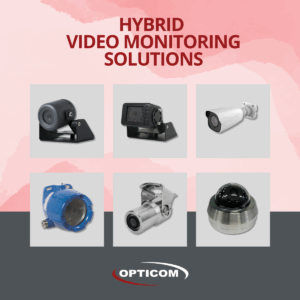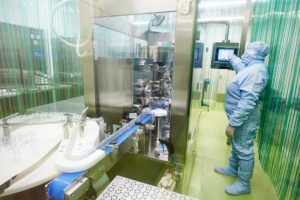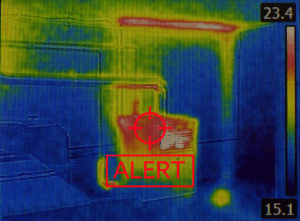When you think about video monitoring systems for industrial applications, cameras are the first thing that springs to mind. This is to be expected: they are the most visible element of the system and, in most cases, the most important.
Cameras are an important component of an industrial video monitoring system. Depending on a facility’s specific needs and environment, the cameras are central to building out the rest of the system.
For example, some mining facilities may need explosion-rated cameras, while in a food processing facility, resistance to moisture and bacteria are more important. The entire configuration of the video monitoring system often starts with choosing the right cameras.
But cameras can’t work alone. Let’s see what else you need for a fully functional video monitoring system.
1. Ruggedized Mounts for Industrial Applications
Camera mounts are easy to ignore, but they contribute a lot to the lifespan of your camera. In industrial applications, vibration-resistant mounts help increase the life of cameras.
Why?
Because vibration is the number one enemy of sensitive electronic equipment like that inside a camera. Since the camera is more expensive than the mount, the latter acts as its “bodyguard,” taking the brunt of the vibration and further protecting its components.
For instance, the VM-1 mount for our CC02 camera is designed to withstand extreme vibrations, like those you’d find in a sawmill or in some mining facilities. This mount is made with advanced vibration-damping polymers that “cushion” vibrations and heavy-gauge aluminum that ensures its own strength.
This combination of materials saved a camera that was hit by a log in a sawmill. Yes, you read that right: an Opticom camera got hit by a log and continued to work perfectly fine thanks to its mount.
2. Video Monitors
Video monitors also play an important part in your monitoring system—afterall, the footage needs somewhere to go. Just like cameras and mounts, monitors need to be chosen according to your specific needs and the environment they will be used in.
Monitors in sawmills, mines, and other harsh industrial environments need to be as rugged as the cameras, with purpose-built exteriors and protection from dust, debris, and vibration.
You can read more about choosing video monitors for industrial applications here.
3. Video Storage
Whether you’re monitoring your video feed in real time or just checking it periodically, you will want to record and store your video footage. Depending on the industry you are in and the way it is regulated, you may need to hold on to the video for years to come, so make sure you choose the right video storage option.
The most popular choices are:
How you use your video monitoring system will influence the best storage choice for each facility. If video monitoring is mostly for an operator to watch the line in real time, you may not need to store footage for long periods of time. However, if you’re using it for compliance, training, or security purposes, you may want to store footage for years.
These decisions impact how much space and what type of storage system is best. And there’s no one best answer—some industrial facilities store recent video content on a DVR or an NVR and, after a defined period of time, move it to the cloud or a data center.
4. Networking
Networking—or the way the various elements of your video monitoring system “talk” to each other—is another important aspect of industrial video monitoring systems. Typically, your choice will be between IP and analog cameras and between wired and wireless cameras.
Let’s take a quick look at these options:
IP Cameras Vs. Analog Cameras
IP (Internet Protocol) cameras use digital data for video transmission. They usually offer better video quality than their analog counterparts, as well as better scalability and more flexibility.
IP cameras can be integrated into your existing network infrastructure, which makes them easier to manage and maintain. We usually recommend this option to our clients who have larger installations and multiple cameras or who require remote access to live and recorded feeds.
Analog cameras use analog signals for video transmission. They are more affordable than IP cameras and easier to install in smaller networks. However, they have lower-quality images and do not offer the same flexibility as IP cameras.
Wired Vs. Wireless Networks
Wired networks are the more reliable and secure option for industrial video monitoring systems. They provide a stable connection, which is very important for critical applications. However, they can be challenging and expensive to install in some environments where running long hardwired cables isn’t straightforward.
Wireless networks are more affordable and more flexible. In challenging environments, where running cables is not possible, they are the only option. They require a stable wireless signal but offer flexibility in placement and replacement.
5. Power
The way you power your video monitoring system depends a lot on its size, complexity, and goals.
You have two major options: local and siamese power.
Local power means that each camera has its own power supply, usually located close by. This is a very good option if the cameras are spread over a large area and power sources are readily available. Its biggest advantage is that a power failure in one power source doesn’t take all of your cameras offline.
With siamese power, both video and power are transmitted over the same cable. This is a major advantage for the installation process because it means you don’t have to run separate cables for each. On the other hand, it can be harder to install and it may not be suitable for all industrial applications, especially for large installations with a lot of cameras.
Both siamese and local power are suitable for industrial ruggedized applications. The choice depends on the distance between your cameras (if they are spread out over a large area, local power may be more practical) and the number of cameras you have (siamese power is more suitable for smaller installations).
6. Bandwidth
The bandwidth your industrial video monitoring system requires depends on a lot of factors: the number of cameras, their type, resolution, frame rate, archiving period, and more. You can use our bandwidth calculator to determine yours.
Viewing Industrial Video Monitoring Systems Holistically
There is a lot more than choosing the right cameras when it comes to putting together an industrial video monitoring system. This is why it’s important to work with a provider that can advise you every step of the way.
At Opticom, we are more than hardware providers. We help you make sure that every decision you make—from the cameras you choose to the way you power them—minimize your investment and meet your goals. We have more than 50 years of experience helping our clients create long-lasting video monitoring systems for the most challenging of environments.
Get in touch with our consultants to learn more about building your own industrial video monitoring system.







